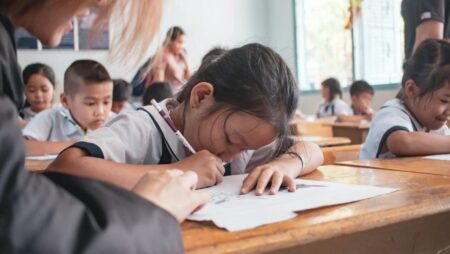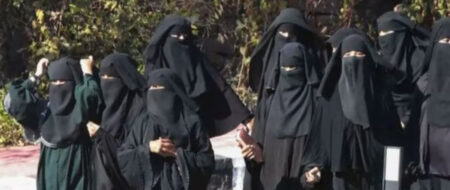Amitabh Kant, the Chief Executive Officer of The National Institute of Transforming India (NITI) Aayog, while addressing a session called Internationalization of Indian Higher Education System at the India pavilion in Dubai Expo 2020, said, “In the current era, there’s a necessity to Internationalize Indian education system using multi-faceted approach”
All higher educational institutes must formulate an ‘Institute Development Plan’ with the vision to be best in their respective fields, Universities can use findings of the National Institute Ranking Framework (NIRF) to inspect areas where they’re lacking, said Amitabh Kant while explaining the multi-pronged approach.
He further stressed that the Education system must leverage the competitive advantage India possesses with its traditional knowledge of Architecture, Medicine, Science, Natural science, Astronomy, Sustainability, etc.
Adding to this he said, Institutes can launch Short term courses in traditional practices in medical science. Internationalization of Education will attract knowledge across the globe, which will add value to Indian Education.
All education institutes must be ranked based on Ease of studying with higher weightage given by international students Kant added. Kant said, “National Education Policy opened the window to revive the higher education system.
I urge all institutes to become world-class institutes and attract students across the world and make India a much-sought education hub”.
Right now Indian education system is facing multiple issues. As per National Statistic Office, there’s a Male Female literacy gap of 14 percent at the All India level (barring regional disparities). The Gross Enrollment Ratio (GER) (Percentage of students enrolled in higher education) is a mere 27%. We can see a dip in GER regarding Schedule castes and Schedule tribe students.
Overall conditions of educational institutes, especially schools, is not up to the mark. There is a shortage of basic facilities in the schools, starting from electricity, separate washrooms, teacher vacancies, road connectivity, distance from home, etc.
Girls are not encouraged by families to get an education. Indian Education System majorly focuses on theoretical knowledge rather than practical knowledge, which can be applied in due course of life. Assessment of one’s ability is tested based on their memory (by examinations) rather than knowledge.
Students are forced to learn subjects that do not interest them. Suppose one does not have the interest or ability to solve mathematical equations and is interested in humanities. In that case, they are compelled to invest their valuable time in complex mathematical problems rather than humanities to attain excellence.
Considering the above issues, the Government of India and the State Government have taken policy measures to improve educational outcomes. The Right to Education was made a fundamental right under Article 21 A of the Indian constitution.
All though the Right to “Higher” Education is not a Fundamental right, India is a signatory to the United Nations Declaration of Human Rights, which asks signatories to provide Higher Education based on merit. The right to Education Act was enacted in 2009 to oblige Government to provide free and compulsory education to those aged between 6 to 14 years.
Mid Day Meal Programme aims to provide a nutritious diet to attract more students and improve nutrition levels. NIPPON Bharat Abhiyaan (Under Samagra Shiksha Abhiyaan) aims for proficiency in Reading with Understanding for every child by 3rd Grade and Capacity building of pedagogy.
School Innovation Ambassador Training Programme aims to Train teachers (Innovation ambassadors) on design thinking, innovation, etc., to promote creativity among children. Ministry of Education has started ranking Higher educational institutes based on NIRF based on teaching, learning, graduation outcomes, and inclusivity.
Government can consider increasing budget allocation towards the education sector to improve Educational and related infrastructure. General Governments can consider providing fiscal incentives for girls to encourage their parents to send them to school. In higher educational institutes, assessing students’
knowledge based on practical work rather than theoretical (written) is the need of the hour. Liberalizing the Education sector for foreign players can attract much-needed expertise.













